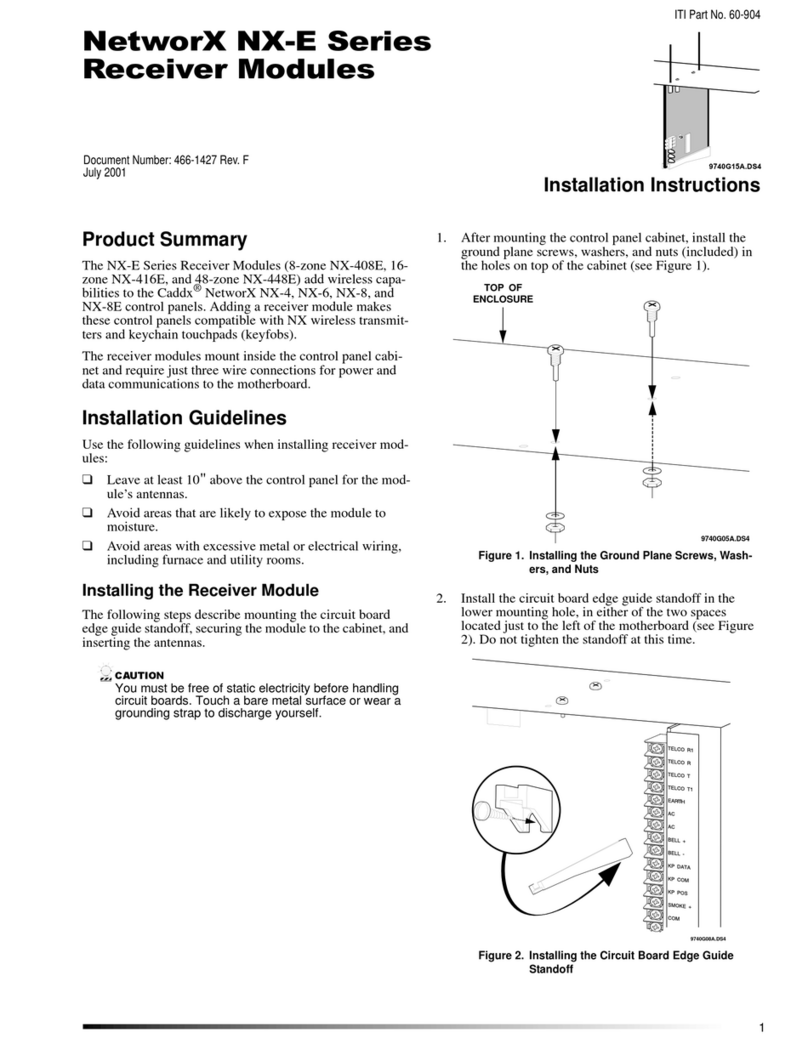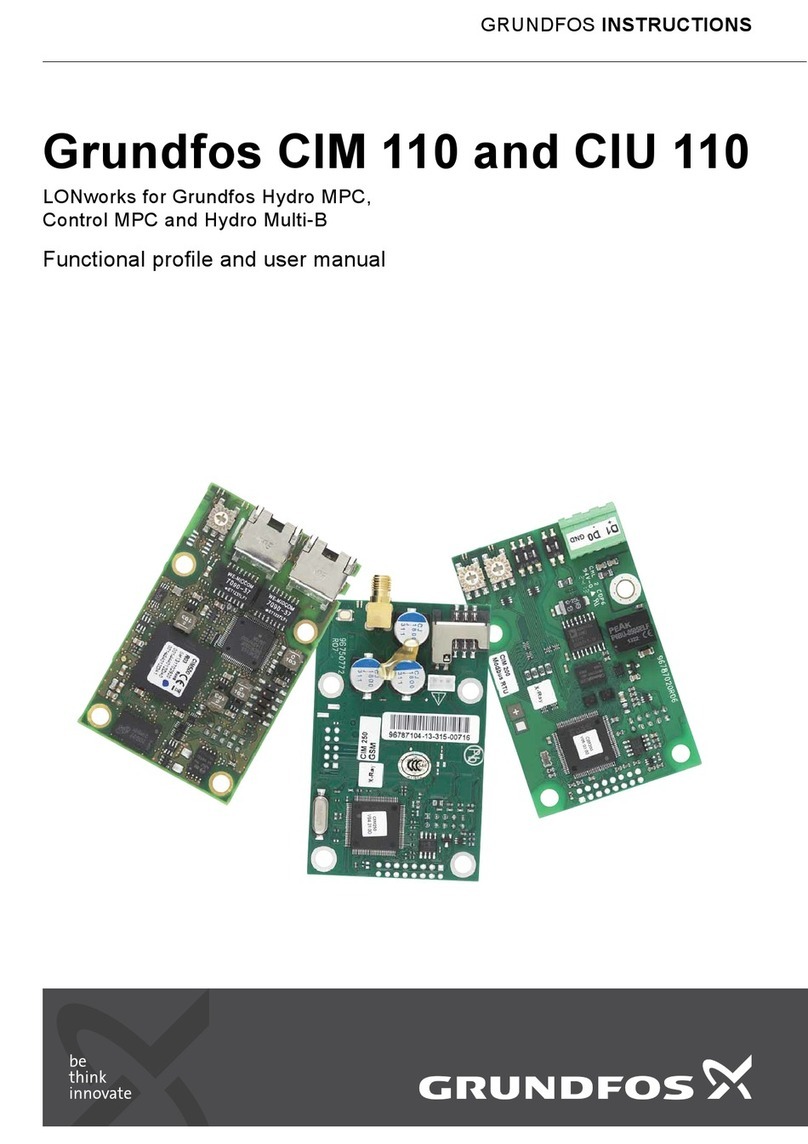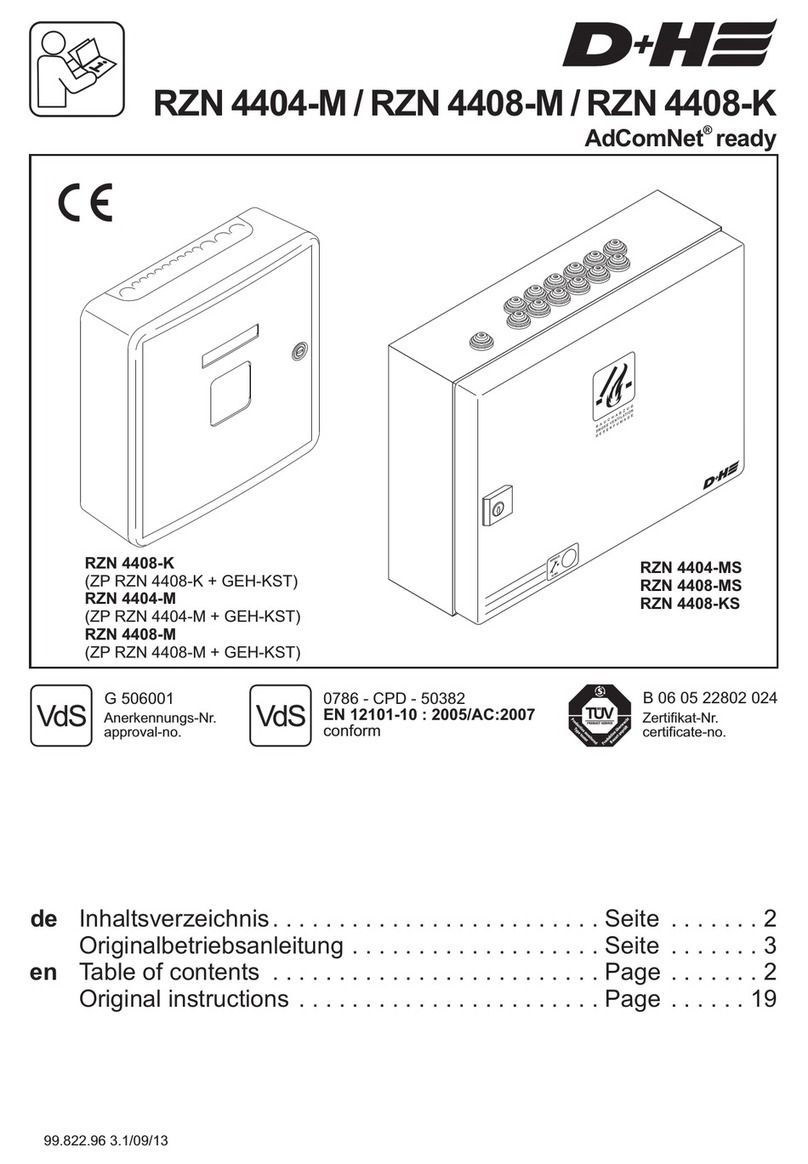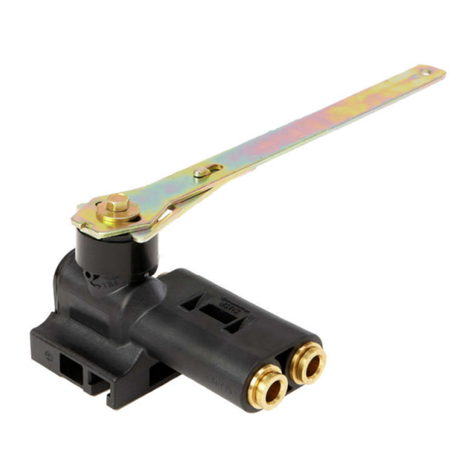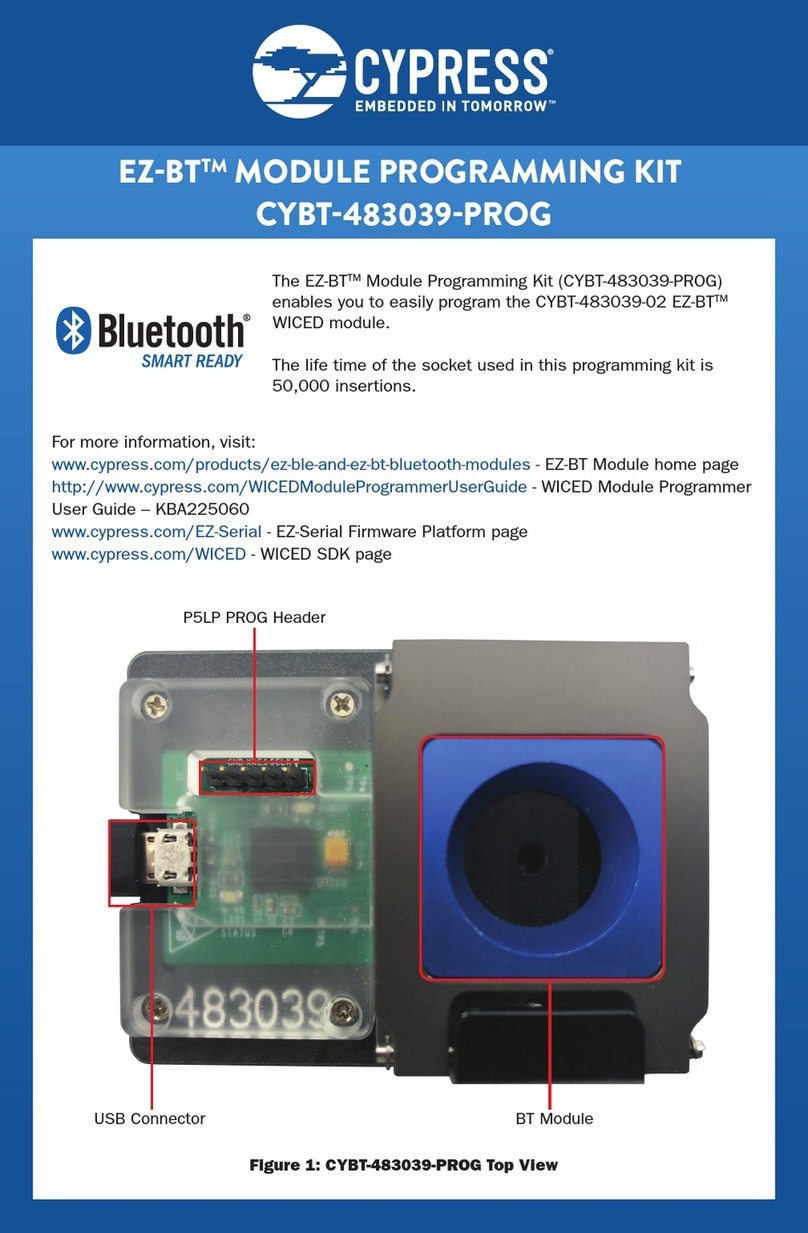NetworX NX Series User manual

NetworX NX Series Receiver Modules
Page 1
NetworX NX Series
Receiver Modules
Document Number: 466-1427 Rev. E
August 1998
Installation
Instructions
Product Summary
The NX-Series Receiver Modules (8-zone NX-408, 16-zone
NX-416, and 48-zone NX-448) add wireless capabilities to
the Caddx®NetworX NX-8 control panel. Adding a receiver
module makes NX-8 control panels compatible with NX
wireless transmitters and keychain touchpads (keyfobs).
The receiver modules mount inside the NX-8 cabinet and
require just three wire connections for power and data com-
munications to the NX-8 motherboard.
Installation Guidelines
Use the following guidelines when installing receiver mod-
ules:
■Leave at least 10"above the control panel for the mod-
ule’s antennas.
■Avoid areas that are likely to expose the module to
moisture.
■Avoid areas with excessive metal or electrical wiring,
including furnace and utility rooms.
Installing the Receiver Module
The following steps describe mounting the circuit board
edge guide standoff, securing the module to the cabinet, and
inserting the antennas.
CAUTION: You must be free of static electricity before
handling circuit boards. Touch a bare metal
surface or wear a grounding strap to dis-
charge yourself.
60-732
9740G15A.DS4
1) After mounting the NX-8 cabinet, install the ground
plane screws, washers, and nuts (included) in the holes
on top of the cabinet (see Figure 1).
Figure 1. Installing the Ground Plane Screws, Washers,
and Nuts
2) Install the circuit board edge guide standoff in the
lower mounting hole, in either of the two spaces
located just to the left of the NX-8 motherboard (see
Figure 2). Do not tighten the standoff at this time.
Figure 2. Installing the Circuit Board Edge Guide
Standoff
9740G05A.DS4
TOP OF
ENCLOSURE
9740G08A.DS4

Page 2
NetworX NX Series Receiver Modules
3) Install the module into the cabinet by turning the stand-
off sideways, then slide the module up onto the ground
plane screw posts (see Figure 3).
Figure 3. Installing the Module into the Cabinet
4) Turn the standoff so the slot is facing up, insert the
back corner of the module into the standoff slot, then
press up at the front of the standoff and tighten the
standoff screw.
5) Insert the antennas through the holes on top of the cab-
inet and into the module antenna sockets (see Figure
4).
Figure 4. Inserting the Antennas
Wiring, Module Number DIP Switch
Settings, and Power Up
The following steps describe wiring the module to the NX-
8, setting the module number DIP switches, and powering
up the NX-8.
1) Remove power (if applied) from the NX-8 control
panel.
CAUTION: To avoid possible equipment damage or per-
sonal injury, remove power from the NX-8
control panel before making any wiring con-
nections to the module.
2) Connect the module power and data terminals to the
NX-8 power and data terminals using 22-gauge or
larger, stranded wire (see Figure 5).
Figure 5. Wiring the Module Power and Data Terminals
to the NX-8 Power and Data Terminals
3) Set the module DIP switches to the desired module
number (see Table 1).
4) If using a NX-408 or NX-416, set DIP switch 3 to
enable zone blocks for transmitter learning as follows:
OFF = zones 9-16 or 9-24 enabled for learning
ON = zones 1-8 or 1-16 enabled for learning
9740G04A.DS4
9740G10A.DS4
Table 1. NX Module Number Settings
Module Number 32 Module Number 33
Module Number 34 Module Number 35
9740G14A.DS4
POWER + (TO NX-8 AUX PWR +)
GND (TO NX-8 COM)
DATA (TO NX-8 KP DATA)
ON
1 2 43
EDG
ON
1 2 43
EDG
ON
1 2 43
EDG
ON
1 2 43
EDG

NetworX NX Series Receiver Modules
Page 3
5) Apply power to the NX-8. The middle (red) LED on
the module should start blinking. Table 2 describes the
module’s status based on LED conditions.
Note: The red LED at the bottom of the module may
emit a dim glow but is not used as an indicator
and can be ignored.
Programming
This section describes the following programming steps:
■Determine Programming Settings—provides tables to
record wireless transmitter and partition settings.
■Enroll the Module—sets up the module to be super-
vised by the NX-8 control panel.
■Program the Module—puts the module into program so
you can program transmitters and enter the settings for
transmitters and partitions.
Determine Transmitter Settings
When programming wireless transmitters into the module,
there are various options and partitions you can set for each
transmitter. These settings appear in segments of each pro-
gramming location.
Check the desired boxes in the programming worksheet
table (Table 3) on pages 4 through 8 to determine the option
and partition settings for each transmitter zone. This gives
you all the programming information in one place and helps
speed up the programming process.
Note: The default settings shown for Segments 1 and 2
in Location 1 (Zone 1) apply to all zone locations
1 through 48.
Special Settings for Door/Window
Transmitters and Wireless Smoke Detectors
Use the following guidelines when setting features 3 and 4
for door/window transmitters and wireless smoke detectors.
■Feature 3—Input Option 1
For door/window transmitters, turn on this feature to
disable the transmitter’s internal reed switches.
For wireless smoke detectors with tamper switches,
turn on this feature to enable the tamper feature.
Note: Feature 3—Input Option 1, must be off (disabled)
when using wireless smoke detectors without
tamper switches.
■Feature 4—Input Option 2
For door/window transmitters that use a normally open
external contact, leave this feature off (N/O).
For door/window transmitters that use a normally
closed external contact, turn this feature on (N/C).
Table 2. Module Status Conditions
LED Module Status
Red-blinking
Red-off
Normal data communication with
NX-8.
No data communication with NX-8.
Check wiring and power source.
Green-blinking
Green-off
Receiving radio signals from Learn
Mode wireless sensors.
No radio signals currently being
received.

Page 4
NetworX NX Series Receiver Modules
Table 3. Module Programming Worksheet Table
Location Segment 1 Segment 2
0 (Supervi-
sion) 1 - Normal ______hrs.
(0 - 255 hours;
default = 24 hours)
Fire ______hrs.
(0 - 255 hours;
default = 4 hours)
1 (Zone 1)
Assigned to
module
#_____.
1 - Enable sensor ❏
(default = off)
2 - Supervised ❏
(default = on)
3 - Input option 1 ❏
(default = off)
4 - Input option 2 ❏
(default = off)
5 - Xmitter not lost* ❏
(default = off)
6 - Low battery* ❏
(default = off)
7 - Last signal good* ❏
(default = off)
8 - Not used*
(*Read only location)
Partition 1 keyfob ❏
(default = on)
Partition 2 keyfob ❏
(default = off)
Partition 3 keyfob ❏
(default = off)
Partition 4 keyfob ❏
(default = off)
Partition 5 keyfob ❏
(default = off)
Partition 6 keyfob ❏
(default = off)
Partition 7 keyfob ❏
(default = off)
Partition 8 keyfob ❏
(default = off)
2 (Zone 2)
Assigned to
module
#_____.
1 - Enable sensor ❏
2 - Supervised ❏
3 - Input option 1 ❏
4 - Input option 2 ❏
5 - Xmitter not lost* ❏
6 - Low battery* ❏
7 - Last signal good* ❏
8 - Not used*
(*Read only location)
Partition 1 keyfob ❏
Partition 2 keyfob ❏
Partition 3 keyfob ❏
Partition 4 keyfob ❏
Partition 5 keyfob ❏
Partition 6 keyfob ❏
Partition 7 keyfob ❏
Partition 8 keyfob ❏
3 (Zone 3)
Assigned to
module
#_____.
1 - Enable sensor ❏
2 - Supervised ❏
3 - Input option 1 ❏
4 - Input option 2 ❏
5 - Xmitter not lost* ❏
6 - Low battery* ❏
7 - Last signal good* ❏
8 - Not used*
(*Read only location)
Partition 1 keyfob ❏
Partition 2 keyfob ❏
Partition 3 keyfob ❏
Partition 4 keyfob ❏
Partition 5 keyfob ❏
Partition 6 keyfob ❏
Partition 7 keyfob ❏
Partition 8 keyfob ❏
4 (Zone 4)
Assigned to
module
#_____.
1 - Enable sensor ❏
2 - Supervised ❏
3 - Input option 1 ❏
4 - Input option 2 ❏
5 - Xmitter not lost* ❏
6 - Low battery* ❏
7 - Last signal good* ❏
8 - Not used*
(*Read only location)
Partition 1 keyfob ❏
Partition 2 keyfob ❏
Partition 3 keyfob ❏
Partition 4 keyfob ❏
Partition 5 keyfob ❏
Partition 6 keyfob ❏
Partition 7 keyfob ❏
Partition 8 keyfob ❏
5 (Zone 5)
Assigned to
module
#_____.
1 - Enable sensor ❏
2 - Supervised ❏
3 - Input option 1 ❏
4 - Input option 2 ❏
5 - Xmitter not lost* ❏
6 - Low battery* ❏
7 - Last signal good* ❏
8 - Not used*
(*Read only location)
Partition 1 keyfob ❏
Partition 2 keyfob ❏
Partition 3 keyfob ❏
Partition 4 keyfob ❏
Partition 5 keyfob ❏
Partition 6 keyfob ❏
Partition 7 keyfob ❏
Partition 8 keyfob ❏
6 (Zone 6)
Assigned to
module
#_____.
1 - Enable sensor ❏
2 - Supervised ❏
3 - Input option 1 ❏
4 - Input option 2 ❏
5 - Xmitter not lost* ❏
6 - Low battery* ❏
7 - Last signal good* ❏
8 - Not used*
(*Read only location)
Partition 1 keyfob ❏
Partition 2 keyfob ❏
Partition 3 keyfob ❏
Partition 4 keyfob ❏
Partition 5 keyfob ❏
Partition 6 keyfob ❏
Partition 7 keyfob ❏
Partition 8 keyfob ❏
7 (Zone 7)
Assigned to
module
#_____.
1 - Enable sensor ❏
2 - Supervised ❏
3 - Input option 1 ❏
4 - Input option 2 ❏
5 - Xmitter not lost* ❏
6 - Low battery* ❏
7 - Last signal good* ❏
8 - Not used*
(*Read only location)
Partition 1 keyfob ❏
Partition 2 keyfob ❏
Partition 3 keyfob ❏
Partition 4 keyfob ❏
Partition 5 keyfob ❏
Partition 6 keyfob ❏
Partition 7 keyfob ❏
Partition 8 keyfob ❏
8 (Zone 8)
Assigned to
module
#_____.
1 - Enable sensor ❏
2 - Supervised ❏
3 - Input option 1 ❏
4 - Input option 2 ❏
5 - Xmitter not lost* ❏
6 - Low battery* ❏
7 - Last signal good* ❏
8 - Not used*
(*Read only location)
Partition 1 keyfob ❏
Partition 2 keyfob ❏
Partition 3 keyfob ❏
Partition 4 keyfob ❏
Partition 5 keyfob ❏
Partition 6 keyfob ❏
Partition 7 keyfob ❏
Partition 8 keyfob ❏
9 (Zone 9)
Assigned to
module
#_____.
1 - Enable sensor ❏
2 - Supervised ❏
3 - Input option 1 ❏
4 - Input option 2 ❏
5 - Xmitter not lost* ❏
6 - Low battery* ❏
7 - Last signal good* ❏
8 - Not used*
(*Read only location)
Partition 1 keyfob ❏
Partition 2 keyfob ❏
Partition 3 keyfob ❏
Partition 4 keyfob ❏
Partition 5 keyfob ❏
Partition 6 keyfob ❏
Partition 7 keyfob ❏
Partition 8 keyfob ❏
Table 3. Module Programming Worksheet Table
(cont.)
Location Segment 1 Segment 2

NetworX NX Series Receiver Modules
Page 5
10 (Zone 10)
Assigned to
module
#_____.
1 - Enable sensor ❏
2 - Supervised ❏
3 - Input option 1 ❏
4 - Input option 2 ❏
5 - Xmitter not lost* ❏
6 - Low battery* ❏
7 - Last signal good* ❏
8 - Not used*
(*Read only location)
Partition 1 keyfob ❏
Partition 2 keyfob ❏
Partition 3 keyfob ❏
Partition 4 keyfob ❏
Partition 5 keyfob ❏
Partition 6 keyfob ❏
Partition 7 keyfob ❏
Partition 8 keyfob ❏
11 (Zone 11)
Assigned to
module
#_____.
1 - Enable sensor ❏
2 - Supervised ❏
3 - Input option 1 ❏
4 - Input option 2 ❏
5 - Xmitter not lost* ❏
6 - Low battery* ❏
7 - Last signal good* ❏
8 - Not used*
(*Read only location)
Partition 1 keyfob ❏
Partition 2 keyfob ❏
Partition 3 keyfob ❏
Partition 4 keyfob ❏
Partition 5 keyfob ❏
Partition 6 keyfob ❏
Partition 7 keyfob ❏
Partition 8 keyfob ❏
12 (Zone 12)
Assigned to
module
#_____.
1 - Enable sensor ❏
2 - Supervised ❏
3 - Input option 1 ❏
4 - Input option 2 ❏
5 - Xmitter not lost* ❏
6 - Low battery* ❏
7 - Last signal good* ❏
8 - Not used*
(*Read only location)
Partition 1 keyfob ❏
Partition 2 keyfob ❏
Partition 3 keyfob ❏
Partition 4 keyfob ❏
Partition 5 keyfob ❏
Partition 6 keyfob ❏
Partition 7 keyfob ❏
Partition 8 keyfob ❏
13 (Zone 13)
Assigned to
module
#_____.
1 - Enable sensor ❏
2 - Supervised ❏
3 - Input option 1 ❏
4 - Input option 2 ❏
5 - Xmitter not lost* ❏
6 - Low battery* ❏
7 - Last signal good* ❏
8 - Not used*
(*Read only location)
Partition 1 keyfob ❏
Partition 2 keyfob ❏
Partition 3 keyfob ❏
Partition 4 keyfob ❏
Partition 5 keyfob ❏
Partition 6 keyfob ❏
Partition 7 keyfob ❏
Partition 8 keyfob ❏
14 (Zone 14)
Assigned to
module
#_____.
1 - Enable sensor ❏
2 - Supervised ❏
3 - Input option 1 ❏
4 - Input option 2 ❏
5 - Xmitter not lost* ❏
6 - Low battery* ❏
7 - Last signal good* ❏
8 - Not used*
(*Read only location)
Partition 1 keyfob ❏
Partition 2 keyfob ❏
Partition 3 keyfob ❏
Partition 4 keyfob ❏
Partition 5 keyfob ❏
Partition 6 keyfob ❏
Partition 7 keyfob ❏
Partition 8 keyfob ❏
Table 3. Module Programming Worksheet Table
(cont.)
Location Segment 1 Segment 2
15 (Zone 15)
Assigned to
module
#_____.
1 - Enable sensor ❏
2 - Supervised ❏
3 - Input option 1 ❏
4 - Input option 2 ❏
5 - Xmitter not lost* ❏
6 - Low battery* ❏
7 - Last signal good* ❏
8 - Not used*
(*Read only location)
Partition 1 keyfob ❏
Partition 2 keyfob ❏
Partition 3 keyfob ❏
Partition 4 keyfob ❏
Partition 5 keyfob ❏
Partition 6 keyfob ❏
Partition 7 keyfob ❏
Partition 8 keyfob ❏
16 (Zone 16)
Assigned to
module
#_____.
1 - Enable sensor ❏
2 - Supervised ❏
3 - Input option 1 ❏
4 - Input option 2 ❏
5 - Xmitter not lost* ❏
6 - Low battery* ❏
7 - Last signal good* ❏
8 - Not used*
(*Read only location)
Partition 1 keyfob ❏
Partition 2 keyfob ❏
Partition 3 keyfob ❏
Partition 4 keyfob ❏
Partition 5 keyfob ❏
Partition 6 keyfob ❏
Partition 7 keyfob ❏
Partition 8 keyfob ❏
17 (Zone 17)
Assigned to
module
#_____.
1 - Enable sensor ❏
2 - Supervised ❏
3 - Input option 1 ❏
4 - Input option 2 ❏
5 - Xmitter not lost* ❏
6 - Low battery* ❏
7 - Last signal good* ❏
8 - Not used*
(*Read only location)
Partition 1 keyfob ❏
Partition 2 keyfob ❏
Partition 3 keyfob ❏
Partition 4 keyfob ❏
Partition 5 keyfob ❏
Partition 6 keyfob ❏
Partition 7 keyfob ❏
Partition 8 keyfob ❏
18 (Zone 18)
Assigned to
module
#_____.
1 - Enable sensor ❏
2 - Supervised ❏
3 - Input option 1 ❏
4 - Input option 2 ❏
5 - Xmitter not lost* ❏
6 - Low battery* ❏
7 - Last signal good* ❏
8 - Not used*
(*Read only location)
Partition 1 keyfob ❏
Partition 2 keyfob ❏
Partition 3 keyfob ❏
Partition 4 keyfob ❏
Partition 5 keyfob ❏
Partition 6 keyfob ❏
Partition 7 keyfob ❏
Partition 8 keyfob ❏
19 (Zone 19)
Assigned to
module
#_____.
1 - Enable sensor ❏
2 - Supervised ❏
3 - Input option 1 ❏
4 - Input option 2 ❏
5 - Xmitter not lost* ❏
6 - Low battery* ❏
7 - Last signal good* ❏
8 - Not used*
(*Read only location)
Partition 1 keyfob ❏
Partition 2 keyfob ❏
Partition 3 keyfob ❏
Partition 4 keyfob ❏
Partition 5 keyfob ❏
Partition 6 keyfob ❏
Partition 7 keyfob ❏
Partition 8 keyfob ❏
Table 3. Module Programming Worksheet Table
(cont.)
Location Segment 1 Segment 2

Page 6
NetworX NX Series Receiver Modules
20 (Zone 20)
Assigned to
module
#_____.
1 - Enable sensor ❏
2 - Supervised ❏
3 - Input option 1 ❏
4 - Input option 2 ❏
5 - Xmitter not lost* ❏
6 - Low battery* ❏
7 - Last signal good* ❏
8 - Not used*
(*Read only location)
Partition 1 keyfob ❏
Partition 2 keyfob ❏
Partition 3 keyfob ❏
Partition 4 keyfob ❏
Partition 5 keyfob ❏
Partition 6 keyfob ❏
Partition 7 keyfob ❏
Partition 8 keyfob ❏
21 (Zone 21)
Assigned to
module
#_____.
1 - Enable sensor ❏
2 - Supervised ❏
3 - Input option 1 ❏
4 - Input option 2 ❏
5 - Xmitter not lost* ❏
6 - Low battery* ❏
7 - Last signal good* ❏
8 - Not used*
(*Read only location)
Partition 1 keyfob ❏
Partition 2 keyfob ❏
Partition 3 keyfob ❏
Partition 4 keyfob ❏
Partition 5 keyfob ❏
Partition 6 keyfob ❏
Partition 7 keyfob ❏
Partition 8 keyfob ❏
22 (Zone 22)
Assigned to
module
#_____.
1 - Enable sensor ❏
2 - Supervised ❏
3 - Input option 1 ❏
4 - Input option 2 ❏
5 - Xmitter not lost* ❏
6 - Low battery* ❏
7 - Last signal good* ❏
8 - Not used*
(*Read only location)
Partition 1 keyfob ❏
Partition 2 keyfob ❏
Partition 3 keyfob ❏
Partition 4 keyfob ❏
Partition 5 keyfob ❏
Partition 6 keyfob ❏
Partition 7 keyfob ❏
Partition 8 keyfob ❏
23 (Zone 23)
Assigned to
module
#_____.
1 - Enable sensor ❏
2 - Supervised ❏
3 - Input option 1 ❏
4 - Input option 2 ❏
5 - Xmitter not lost* ❏
6 - Low battery* ❏
7 - Last signal good* ❏
8 - Not used*
(*Read only location)
Partition 1 keyfob ❏
Partition 2 keyfob ❏
Partition 3 keyfob ❏
Partition 4 keyfob ❏
Partition 5 keyfob ❏
Partition 6 keyfob ❏
Partition 7 keyfob ❏
Partition 8 keyfob ❏
24 (Zone 24)
Assigned to
module
#_____.
1 - Enable sensor ❏
2 - Supervised ❏
3 - Input option 1 ❏
4 - Input option 2 ❏
5 - Xmitter not lost* ❏
6 - Low battery* ❏
7 - Last signal good* ❏
8 - Not used*
(*Read only location)
Partition 1 keyfob ❏
Partition 2 keyfob ❏
Partition 3 keyfob ❏
Partition 4 keyfob ❏
Partition 5 keyfob ❏
Partition 6 keyfob ❏
Partition 7 keyfob ❏
Partition 8 keyfob ❏
Table 3. Module Programming Worksheet Table
(cont.)
Location Segment 1 Segment 2
25 (Zone 25)
Assigned to
module
#_____.
1 - Enable sensor ❏
2 - Supervised ❏
3 - Input option 1 ❏
4 - Input option 2 ❏
5 - Xmitter not lost* ❏
6 - Low battery* ❏
7 - Last signal good* ❏
8 - Not used*
(*Read only location)
Partition 1 keyfob ❏
Partition 2 keyfob ❏
Partition 3 keyfob ❏
Partition 4 keyfob ❏
Partition 5 keyfob ❏
Partition 6 keyfob ❏
Partition 7 keyfob ❏
Partition 8 keyfob ❏
26 (Zone 26)
Assigned to
module
#_____.
1 - Enable sensor ❏
2 - Supervised ❏
3 - Input option 1 ❏
4 - Input option 2 ❏
5 - Xmitter not lost* ❏
6 - Low battery* ❏
7 - Last signal good* ❏
8 - Not used*
(*Read only location)
Partition 1 keyfob ❏
Partition 2 keyfob ❏
Partition 3 keyfob ❏
Partition 4 keyfob ❏
Partition 5 keyfob ❏
Partition 6 keyfob ❏
Partition 7 keyfob ❏
Partition 8 keyfob ❏
27 (Zone 27)
Assigned to
module
#_____.
1 - Enable sensor ❏
2 - Supervised ❏
3 - Input option 1 ❏
4 - Input option 2 ❏
5 - Xmitter not lost* ❏
6 - Low battery* ❏
7 - Last signal good* ❏
8 - Not used*
(*Read only location)
Partition 1 keyfob ❏
Partition 2 keyfob ❏
Partition 3 keyfob ❏
Partition 4 keyfob ❏
Partition 5 keyfob ❏
Partition 6 keyfob ❏
Partition 7 keyfob ❏
Partition 8 keyfob ❏
28 (Zone 28)
Assigned to
module
#_____.
1 - Enable sensor ❏
2 - Supervised ❏
3 - Input option 1 ❏
4 - Input option 2 ❏
5 - Xmitter not lost* ❏
6 - Low battery* ❏
7 - Last signal good* ❏
8 - Not used*
(*Read only location)
Partition 1 keyfob ❏
Partition 2 keyfob ❏
Partition 3 keyfob ❏
Partition 4 keyfob ❏
Partition 5 keyfob ❏
Partition 6 keyfob ❏
Partition 7 keyfob ❏
Partition 8 keyfob ❏
29 (Zone 29)
Assigned to
module
#_____.
1 - Enable sensor ❏
2 - Supervised ❏
3 - Input option 1 ❏
4 - Input option 2 ❏
5 - Xmitter not lost* ❏
6 - Low battery* ❏
7 - Last signal good* ❏
8 - Not used*
(*Read only location)
Partition 1 keyfob ❏
Partition 2 keyfob ❏
Partition 3 keyfob ❏
Partition 4 keyfob ❏
Partition 5 keyfob ❏
Partition 6 keyfob ❏
Partition 7 keyfob ❏
Partition 8 keyfob ❏
Table 3. Module Programming Worksheet Table
(cont.)
Location Segment 1 Segment 2

NetworX NX Series Receiver Modules
Page 7
30 (Zone 30)
Assigned to
module
#_____.
1 - Enable sensor ❏
2 - Supervised ❏
3 - Input option 1 ❏
4 - Input option 2 ❏
5 - Xmitter not lost* ❏
6 - Low battery* ❏
7 - Last signal good* ❏
8 - Not used*
(*Read only location)
Partition 1 keyfob ❏
Partition 2 keyfob ❏
Partition 3 keyfob ❏
Partition 4 keyfob ❏
Partition 5 keyfob ❏
Partition 6 keyfob ❏
Partition 7 keyfob ❏
Partition 8 keyfob ❏
31 (Zone 31)
Assigned to
module
#_____.
1 - Enable sensor ❏
2 - Supervised ❏
3 - Input option 1 ❏
4 - Input option 2 ❏
5 - Xmitter not lost* ❏
6 - Low battery* ❏
7 - Last signal good* ❏
8 - Not used*
(*Read only location)
Partition 1 keyfob ❏
Partition 2 keyfob ❏
Partition 3 keyfob ❏
Partition 4 keyfob ❏
Partition 5 keyfob ❏
Partition 6 keyfob ❏
Partition 7 keyfob ❏
Partition 8 keyfob ❏
32 (Zone 32)
Assigned to
module
#_____.
1 - Enable sensor ❏
2 - Supervised ❏
3 - Input option 1 ❏
4 - Input option 2 ❏
5 - Xmitter not lost* ❏
6 - Low battery* ❏
7 - Last signal good* ❏
8 - Not used*
(*Read only location)
Partition 1 keyfob ❏
Partition 2 keyfob ❏
Partition 3 keyfob ❏
Partition 4 keyfob ❏
Partition 5 keyfob ❏
Partition 6 keyfob ❏
Partition 7 keyfob ❏
Partition 8 keyfob ❏
33 (Zone 33)
Assigned to
module
#_____.
1 - Enable sensor ❏
2 - Supervised ❏
3 - Input option 1 ❏
4 - Input option 2 ❏
5 - Xmitter not lost* ❏
6 - Low battery* ❏
7 - Last signal good* ❏
8 - Not used*
(*Read only location)
Partition 1 keyfob ❏
Partition 2 keyfob ❏
Partition 3 keyfob ❏
Partition 4 keyfob ❏
Partition 5 keyfob ❏
Partition 6 keyfob ❏
Partition 7 keyfob ❏
Partition 8 keyfob ❏
34 (Zone 34)
Assigned to
module
#_____.
1 - Enable sensor ❏
2 - Supervised ❏
3 - Input option 1 ❏
4 - Input option 2 ❏
5 - Xmitter not lost* ❏
6 - Low battery* ❏
7 - Last signal good* ❏
8 - Not used*
(*Read only location)
Partition 1 keyfob ❏
Partition 2 keyfob ❏
Partition 3 keyfob ❏
Partition 4 keyfob ❏
Partition 5 keyfob ❏
Partition 6 keyfob ❏
Partition 7 keyfob ❏
Partition 8 keyfob ❏
Table 3. Module Programming Worksheet Table
(cont.)
Location Segment 1 Segment 2
35 (Zone 35)
Assigned to
module
#_____.
1 - Enable sensor ❏
2 - Supervised ❏
3 - Input option 1 ❏
4 - Input option 2 ❏
5 - Xmitter not lost* ❏
6 - Low battery* ❏
7 - Last signal good* ❏
8 - Not used*
(*Read only location)
Partition 1 keyfob ❏
Partition 2 keyfob ❏
Partition 3 keyfob ❏
Partition 4 keyfob ❏
Partition 5 keyfob ❏
Partition 6 keyfob ❏
Partition 7 keyfob ❏
Partition 8 keyfob ❏
36 (Zone 36)
Assigned to
module
#_____.
1 - Enable sensor ❏
2 - Supervised ❏
3 - Input option 1 ❏
4 - Input option 2 ❏
5 - Xmitter not lost* ❏
6 - Low battery* ❏
7 - Last signal good* ❏
8 - Not used*
(*Read only location)
Partition 1 keyfob ❏
Partition 2 keyfob ❏
Partition 3 keyfob ❏
Partition 4 keyfob ❏
Partition 5 keyfob ❏
Partition 6 keyfob ❏
Partition 7 keyfob ❏
Partition 8 keyfob ❏
37 (Zone 37)
Assigned to
module
#_____.
1 - Enable sensor ❏
2 - Supervised ❏
3 - Input option 1 ❏
4 - Input option 2 ❏
5 - Xmitter not lost* ❏
6 - Low battery* ❏
7 - Last signal good* ❏
8 - Not used*
(*Read only location)
Partition 1 keyfob ❏
Partition 2 keyfob ❏
Partition 3 keyfob ❏
Partition 4 keyfob ❏
Partition 5 keyfob ❏
Partition 6 keyfob ❏
Partition 7 keyfob ❏
Partition 8 keyfob ❏
38 (Zone 38)
Assigned to
module
#_____.
1 - Enable sensor ❏
2 - Supervised ❏
3 - Input option 1 ❏
4 - Input option 2 ❏
5 - Xmitter not lost* ❏
6 - Low battery* ❏
7 - Last signal good* ❏
8 - Not used*
(*Read only location)
Partition 1 keyfob ❏
Partition 2 keyfob ❏
Partition 3 keyfob ❏
Partition 4 keyfob ❏
Partition 5 keyfob ❏
Partition 6 keyfob ❏
Partition 7 keyfob ❏
Partition 8 keyfob ❏
39 (Zone 39)
Assigned to
module
#_____.
1 - Enable sensor ❏
2 - Supervised ❏
3 - Input option 1 ❏
4 - Input option 2 ❏
5 - Xmitter not lost* ❏
6 - Low battery* ❏
7 - Last signal good* ❏
8 - Not used*
(*Read only location)
Partition 1 keyfob ❏
Partition 2 keyfob ❏
Partition 3 keyfob ❏
Partition 4 keyfob ❏
Partition 5 keyfob ❏
Partition 6 keyfob ❏
Partition 7 keyfob ❏
Partition 8 keyfob ❏
Table 3. Module Programming Worksheet Table
(cont.)
Location Segment 1 Segment 2

Page 8
NetworX NX Series Receiver Modules
40 (Zone 40)
Assigned to
module
#_____.
1 - Enable sensor ❏
2 - Supervised ❏
3 - Input option 1 ❏
4 - Input option 2 ❏
5 - Xmitter not lost* ❏
6 - Low battery* ❏
7 - Last signal good* ❏
8 - Not used*
(*Read only location)
Partition 1 keyfob ❏
Partition 2 keyfob ❏
Partition 3 keyfob ❏
Partition 4 keyfob ❏
Partition 5 keyfob ❏
Partition 6 keyfob ❏
Partition 7 keyfob ❏
Partition 8 keyfob ❏
41 (Zone 41)
Assigned to
module
#_____.
1 - Enable sensor ❏
2 - Supervised ❏
3 - Input option 1 ❏
4 - Input option 2 ❏
5 - Xmitter not lost* ❏
6 - Low battery* ❏
7 - Last signal good* ❏
8 - Not used*
(*Read only location)
Partition 1 keyfob ❏
Partition 2 keyfob ❏
Partition 3 keyfob ❏
Partition 4 keyfob ❏
Partition 5 keyfob ❏
Partition 6 keyfob ❏
Partition 7 keyfob ❏
Partition 8 keyfob ❏
42 (Zone 42)
Assigned to
module
#_____.
1 - Enable sensor ❏
2 - Supervised ❏
3 - Input option 1 ❏
4 - Input option 2 ❏
5 - Xmitter not lost* ❏
6 - Low battery* ❏
7 - Last signal good* ❏
8 - Not used*
(*Read only location)
Partition 1 keyfob ❏
Partition 2 keyfob ❏
Partition 3 keyfob ❏
Partition 4 keyfob ❏
Partition 5 keyfob ❏
Partition 6 keyfob ❏
Partition 7 keyfob ❏
Partition 8 keyfob ❏
43 (Zone 43)
Assigned to
module
#_____.
1 - Enable sensor ❏
2 - Supervised ❏
3 - Input option 1 ❏
4 - Input option 2 ❏
5 - Xmitter not lost* ❏
6 - Low battery* ❏
7 - Last signal good* ❏
8 - Not used*
(*Read only location)
Partition 1 keyfob ❏
Partition 2 keyfob ❏
Partition 3 keyfob ❏
Partition 4 keyfob ❏
Partition 5 keyfob ❏
Partition 6 keyfob ❏
Partition 7 keyfob ❏
Partition 8 keyfob ❏
44 (Zone 44)
Assigned to
module
#_____.
1 - Enable sensor ❏
2 - Supervised ❏
3 - Input option 1 ❏
4 - Input option 2 ❏
5 - Xmitter not lost* ❏
6 - Low battery* ❏
7 - Last signal good* ❏
8 - Not used*
(*Read only location)
Partition 1 keyfob ❏
Partition 2 keyfob ❏
Partition 3 keyfob ❏
Partition 4 keyfob ❏
Partition 5 keyfob ❏
Partition 6 keyfob ❏
Partition 7 keyfob ❏
Partition 8 keyfob ❏
Table 3. Module Programming Worksheet Table
(cont.)
Location Segment 1 Segment 2
45 (Zone 45)
Assigned to
module
#_____.
1 - Enable sensor ❏
2 - Supervised ❏
3 - Input option 1 ❏
4 - Input option 2 ❏
5 - Xmitter not lost* ❏
6 - Low battery* ❏
7 - Last signal good* ❏
8 - Not used*
(*Read only location)
Partition 1 keyfob ❏
Partition 2 keyfob ❏
Partition 3 keyfob ❏
Partition 4 keyfob ❏
Partition 5 keyfob ❏
Partition 6 keyfob ❏
Partition 7 keyfob ❏
Partition 8 keyfob ❏
46 (Zone 46)
Assigned to
module
#_____.
1 - Enable sensor ❏
2 - Supervised ❏
3 - Input option 1 ❏
4 - Input option 2 ❏
5 - Xmitter not lost* ❏
6 - Low battery* ❏
7 - Last signal good* ❏
8 - Not used*
(*Read only location)
Partition 1 keyfob ❏
Partition 2 keyfob ❏
Partition 3 keyfob ❏
Partition 4 keyfob ❏
Partition 5 keyfob ❏
Partition 6 keyfob ❏
Partition 7 keyfob ❏
Partition 8 keyfob ❏
47 (Zone 47)
Assigned to
module
#_____.
1 - Enable sensor ❏
2 - Supervised ❏
3 - Input option 1 ❏
4 - Input option 2 ❏
5 - Xmitter not lost* ❏
6 - Low battery* ❏
7 - Last signal good* ❏
8 - Not used*
(*Read only location)
Partition 1 keyfob ❏
Partition 2 keyfob ❏
Partition 3 keyfob ❏
Partition 4 keyfob ❏
Partition 5 keyfob ❏
Partition 6 keyfob ❏
Partition 7 keyfob ❏
Partition 8 keyfob ❏
48 (Zone 48)
Assigned to
module
#_____.
1 - Enable sensor ❏
2 - Supervised ❏
3 - Input option 1 ❏
4 - Input option 2 ❏
5 - Xmitter not lost* ❏
6 - Low battery* ❏
7 - Last signal good* ❏
8 - Not used*
(*Read only location)
Partition 1 keyfob ❏
Partition 2 keyfob ❏
Partition 3 keyfob ❏
Partition 4 keyfob ❏
Partition 5 keyfob ❏
Partition 6 keyfob ❏
Partition 7 keyfob ❏
Partition 8 keyfob ❏
49 (Trans-
mitter to be
programmed)
None None
Table 3. Module Programming Worksheet Table
(cont.)
Location Segment 1 Segment 2

NetworX NX Series Receiver Modules
Page 9
Enroll the Module
The following steps describe how to enroll and program the
module to be supervised by the NX-8.
1) With power applied and the system disarmed, enter [✻]
[8] at the keypad. The five function lights should start
flashing.
2) Enter the “Go To Program Code” (factory default is 9 7
1 3). The service light should flash and the five func-
tion lights should change from flashing to on steady.
3) Enter [0] [#], where [0] is the NX-8 control panel num-
ber and [#] is the entry key. The Armed LED should
turn on, indicating the control panel is waiting for a
programming location entry.
4) Enter [9] [1] [5] [#] to enroll the module for supervi-
sion. The keypad sounder should beep three times indi-
cating the NX-8 has accepted the enrolling request.
5) Exit program mode by entering [EXIT] [EXIT]. The
Service LED on the NX-8 turns on, indicating the con-
trol panel is enrolling the module. After about 12 sec-
onds, the service LED should turn off.
Program the Module
The following steps describe how to get the module into
program mode, load factory defaults if installing a new sys-
tem, and program transmitters into memory.
Programming Guidelines
■When a transmitter is learned into memory, the module
claims a block of eight zones around that number (1-8,
9-16, 17-24, etc.). For example, learning a transmitter
into zone 13 automatically claims the zone block of 9
through 16. Only wireless transmitters can now be
assigned to these zones.
■Do not learn wireless transmitters into a zone block
claimed by a hardwire expander or the panel.
■If two modules are installed, they cannot share the
same zone block. For example, wireless transmitters
learned into zones 11 and 12 must reside in one mod-
ule.
Fill in Table 4 to help keep track of zone block module
assignments. Be sure to circle the module type; RM =
receiver module, HE = hardwire expander, P = panel.
To program the module:
1) Enter [✻] [8] at the keypad. The five function lights
should start flashing.
2) Enter the “Go To Program Code” (factory default is 9 7
1 3). The service light should flash and the five func-
tion lights should change from flashing to on steady.
3) Enter [XX] [#], where [XX] is the DIP switch setting
module number and [#] is the entry key. The Armed
LED should turn on, indicating the control panel is
waiting for a programming location entry.
4) For new installations, enter [9] [1] [0] [#] to load fac-
tory defaults and clear any unwanted information in
memory before any further programming.
50 (All
default off) 1 - Keyfob user ID ❏
(off = all keyfobs
report as user 99;
on = keyfob reports
as its learned zone)
2 - Enable jam detect ❏
3 - Enable antenna
tamper (Only
selectable on Inter-
national versions,
reports as box
tamper) ❏
4 - Enable auto
advance to next
zone number ❏
5 - Enable partition 1
audible program-
ming beeps ❏
6-8 Not used
51 (Default
= 0) Starting zone number
for receiver
0 = 1* (default) ❏
1 = 9 ❏
2 = 17 ❏
3 = 25 ❏
4 = 33 ❏
5 = 41 ❏
(* When set to 0, the
starting zone number
is determined by DIP
switch 3 setting.)
Table 3. Module Programming Worksheet Table
(cont.)
Location Segment 1 Segment 2
Table 4. Zone Block Module Assignments
Zone Block Assigned To Module
1 - 8 RM HE P #______
9 - 16 RM HE P #______
17 - 24 RM HE P #______
25 - 32 RM HE P #______
33 - 40 RM HE P #______
41 - 48 RM HE P #______

Page 10
NetworX NX Series Receiver Modules
5) Enter [4] [9] [#] to enter the sensor learning location.
The Ready LED should turn on and the Armed LED
should turn off.
6) Enter [XX] [✻], where [XX] is a zone number (1
through 48) and [✻] is the entry key.
Note: Three beeps from the keypad indicates an entry
error. This occurs if you enter a transmitter num-
ber that is not within the module’s zone block or if
you try learning a sensor that is already learned
into the module.
If you change your mind about your entry, you
can terminate programming by entering [4] [9] [#]
[0] [✻]. Then, start again from step 5.
7) Trip the desired transmitter (within 250 seconds) as
described in Table 5. Listen for the ‘ding dong’ for
confirmation.
8) Program remaining transmitters by repeating steps 5-7.
9) Exit program mode by entering [EXIT] [EXIT].
Program Transmitter and Partition
Settings
This section describes programming guidelines, how to
change the supervision windows, and program the transmit-
ter and partition settings using the information you entered
in the Table 3 programming worksheets.
Changing the Transmitter Supervision
Windows
Note: For UL Listed installations, the normal supervi-
sion window must be set to 24 hours and the fire
supervision window must be set to 4 hours.
CAUTION: Do not set the normal or fire supervision win-
dows to 1 hour. This causes false trouble
reports from all learned wireless transmitters.
1) Enter [✻] [8] at the keypad. The five function lights
should start flashing.
2) Enter the “Go To Program Code” (factory default is 9 7
1 3). The service light should flash and the five func-
tion lights should change from flashing to on steady.
3) Enter [XX] [#], where [XX] is the DIP switch setting
module number and [#] is the entry key. The Armed
LED should turn on, indicating the control panel is
waiting for a programming location entry.
4) Enter [0] [#] to enter location 0, segment 1.
5) Enter the new normal supervision time (0 - 255).
Note: Choosing 0 sets the normal supervision window
to 256 hours.
6) Press [✻] to save any changes and automatically enter
segment 2.
7) Enter the new fire supervision time (0 - 255).
Note: Choosing 0 sets the fire supervision window to
256 hours.
Table 5. Tripping Transmitters for Learning
Transmitter Action
Door/Window, Shock,
Glass Guard, Freeze Activate tamper switch by
removing cover.
Door/Window with Exter-
nal Contact Activate tamper switch by
removing cover. (Note:
Feature3—InputOption
1, must be on.)
Recessed Door/Window Activate tamper switch by
removing circuit board
until tamper switch is
exposed.
Micro Door/Window Slide the battery about
half-way out of the battery
holder, then back.
PIR Activate tamper switch by
removing back plate from
PIR.
Smoke Detector Press and hold the test but-
ton.
Heat Detector Press, then release the
tamper switch.
Fire Pull Activate tamper switch by
removing sensor cover.
Single Button Panic Press and hold the button.
Dual Button Panic Press and hold both but-
tons together.
Keyfobs Press and hold the arm and
disarm buttons together.
Repeater Press, then release the
tamper switch.
Table 5. Tripping Transmitters for Learning
Transmitter Action

NetworX NX Series Receiver Modules
Page 11
8) Press [✻] to save any changes. The panel is now wait-
ing for the next location entry.
Note: Pressing [#] does not save changes to the cur-
rent segment, but does save changes made in
previous segments.
9) Enter [EXIT] [EXIT] when all changes are completed.
Programming Transmitter and Partition
Settings
1) Enter [✻] [8] at the keypad. The five function lights
should start flashing.
2) Enter the “Go To Program Code” (factory default is 9 7
1 3). The service light should flash and the five func-
tion lights should change from flashing to on steady.
3) Enter [XX] [#], where [XX] is the DIP switch setting
module number and [#] is the entry key. The Armed
LED should turn on, indicating the control panel is
waiting for a programming location entry.
4) Enter [XX] [#] to enter a location. For example, enter
[1] [#] to enter location 1, segment 1. The Armed LED
should turn on and the zone LEDs display the binary
data for the current settings.
or-- Enter [1] [#] [✻] to enter location 1, segment 2.
5) Enter [X] [✻], where [X] is the setting number (1 - 8)
from Table 5 that corresponds to the desired feature or
partition setting number and [✻] is the entry key. The
keypad displays the settings for that location and seg-
ment.
6) Press the keypad button that corresponds to the feature
number you want changed. Lights corresponding to the
feature number turn on or off each time the button is
pressed. Lights that turn on indicate the feature is on,
lights that turn off indicate the feature is off.
For example, turn on transmitter features 1 (Transmit-
ter Enabled) and 3 (Input Option 1) by pressing [1] [3].
The 1 and 3 LEDs turn on to indicate the features are
turned on and the Ready LED flashes to indicate the
change request.
7) Press [✻] to enter the changes and automatically
advance to segment 2.
Note: Pressing [#] does not save changes to the cur-
rent segment, but does save changes made in
previous segments. Repeat steps 4 - 7 to re-
enter and make changes to a location and seg-
ment.
8) Press the keypad button that corresponds to the parti-
tion number you want changed. Lights corresponding
to the partition number turn on or off each time the but-
ton is pressed. Lights that turn on indicate the keyfob is
active in that partition, lights that turn off indicate the
keyfob is inactive.
9) Repeat steps 4 - 8 to continue programming transmitter
partition settings.
10) Enter [EXIT] [EXIT] when finished.
Deleting Transmitters
The following steps describe how to delete transmitters from
the module.
This procedure makes the module ignore a transmitter but
does not remove transmitter identification from the mod-
ule’s memory. The transmitter can be reactivated later or a
new one can be learned into the zone.
1) Enter [✻] [8] at the keypad. The five function lights
should start flashing.
2) Enter the “Go To Program Code” (factory default is 9 7
1 3). The service light should flash and the five func-
tion lights should change from flashing to on steady.
3) Enter [XX] [#], where [XX] is the DIP switch setting
module number and [#] is the entry key. The Armed
LED should turn on, indicating the control panel is
waiting for a programming location entry.
4) Enter [XX] [#] to enter the zone location to be deleted.
The Armed LED should turn on and the zone LEDs
display the binary data for the current settings.
5) Change transmitter feature 1 (Transmitter Enabled) by
pressing [1]. The 1 LED turns off to indicate the feature
change and the Ready LED flashes to indicate the
change request.
6) Enter [✻] [#]. The Ready LED stops flashing, indicat-
ing the new settings are stored in memory and the sys-
tem automatically exits from that location.
7) Continue deleting transmitters by entering the desired
locations and segments in steps 4 through 6.
or-- Enter [9] [1] [0] [#] to delete all transmitters and load
factory defaults.
8) Enter [EXIT] [EXIT] when finished.
Testing Wireless Transmitters
Test all transmitters to verify correct programming and
operation, using the steps below.
1) Trip a transmitter (open a door, walk in front of a PIR,
etc.).
2) Enter [✻] [8] at the keypad. The five function lights
should start flashing.
3) Enter the “Go To Program Code” (factory default is 9 7
1 3). The service light should flash and the five func-
tion lights should change from flashing to on steady.
4) Enter [XX] [#], where [XX] is the DIP switch setting
module number and [#] is the entry key. The Armed
LED should turn on, indicating the control panel is
waiting for a programming location entry.

Page 12
NetworX NX Series Receiver Modules
5) Enter the tripped transmitters’ location.
6) Observe keypad light 7 which should be on, indicating
the transmitters’ signal is good.
If keypad light 7 is off (transmitter test below margin),
exit program mode and repeat steps 1-6 above.
Troubleshooting
Any transmitters that consistently test below margin should
be rotated in mounting position (90°, 180°, or 270°) and
retested.
If rotating the transmitter mounting position does not
improve signal reception or is not practical, move the trans-
mitter to different locations near the desired mounting area.
Test each location until the transmitter consistently tests
good, then mount the transmitter.
Specifications
Compatibility: NX-8 control panel
Frequency: 319.5 MHz (NX-408, NX-416, & NX-448)
433 MHz (NX-408-I, NX-416-I, & NX-448-I)
Required Power: 12.0 VDC (provided by panel)
Current Draw: 20 mA maximum
Operating Temperature Range: 32° to 120°F
Dimensions: 4.65"x 3.20"(L x W)
U.L. Listings
The NetworX NX Series Receiver Modules (60-732) are
U.L. Listed for UL1023 Household Burglary, UL985
Household Fire, and are listed for use with the following
U.L. Listed devices:
NX-451 Door/Window Sensor (60-670-95R)
NX-470 4-Button Keychain Touchpad (60-659-95R)
NX-475 Water-Resistant Pendant Panic Button (60-578)
NX-480 PIR Motion Sensor (60-639-95R)
NX-490 Wireless Smoke Sensor (60-506)
Notices
This device complies with FCC Rules Part 15. Operation is subject to the fol-
lowing two conditions:
1) This device may not cause harmful interference.
2) This device must accept any interference that may be received, including
interference that may cause undesired operation.
Changes or modifications not expressly approved by Interactive Technolo-
gies, Inc. can void the user’s authority to operate the equipment.
Caddx Controls, Inc. 1420 North Main Street Gladewater, Texas 75647
Toll Free: 1-800-727-2339 FAX: (903) 845-6811
Caddx is a registered trademark of Caddx Controls, Inc.
This manual suits for next models
3
Table of contents
Other NetworX Control Unit manuals
Popular Control Unit manuals by other brands
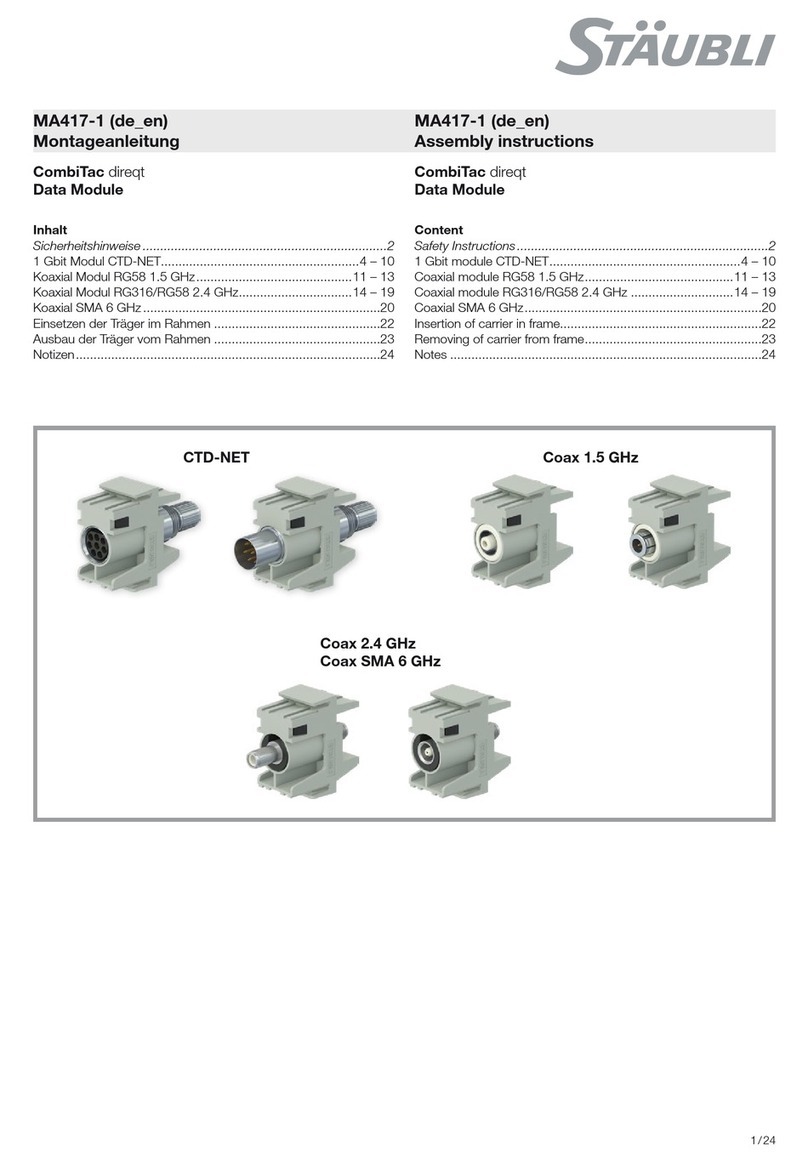
Staubli
Staubli CombiTac direqt CTD-NET Assembly instructions
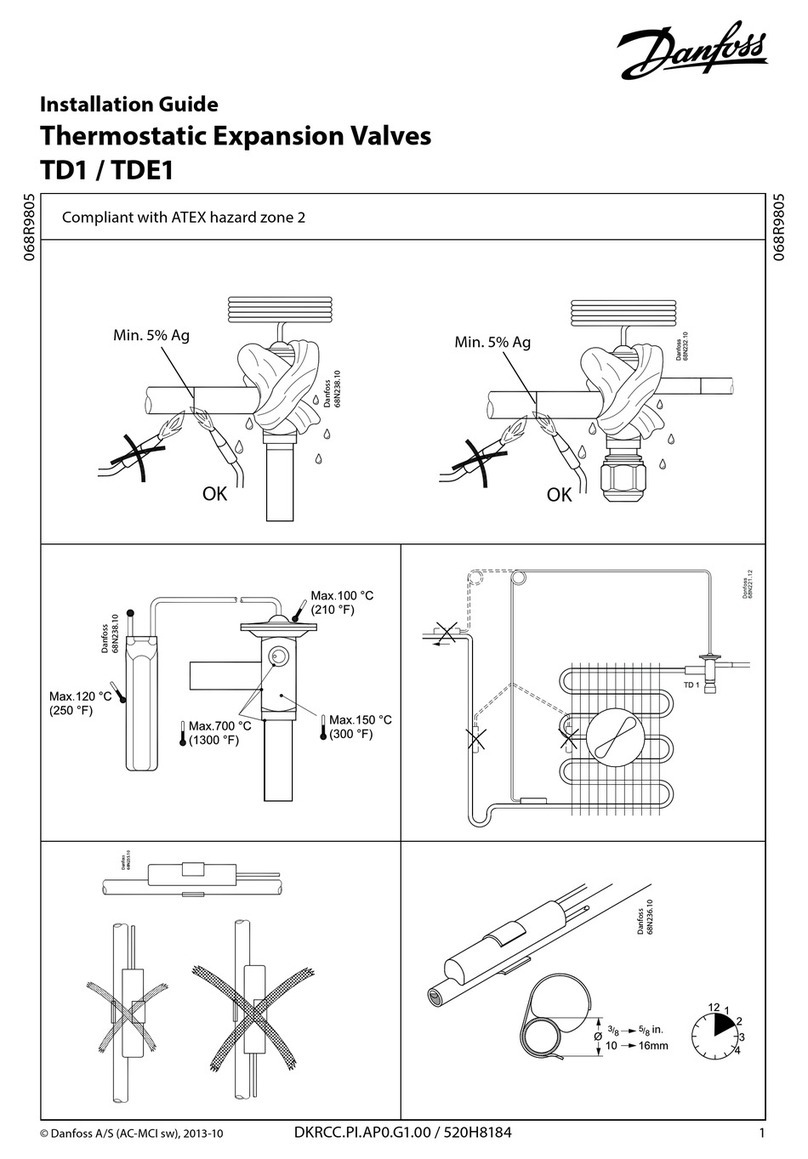
Danfoss
Danfoss TD1 installation guide
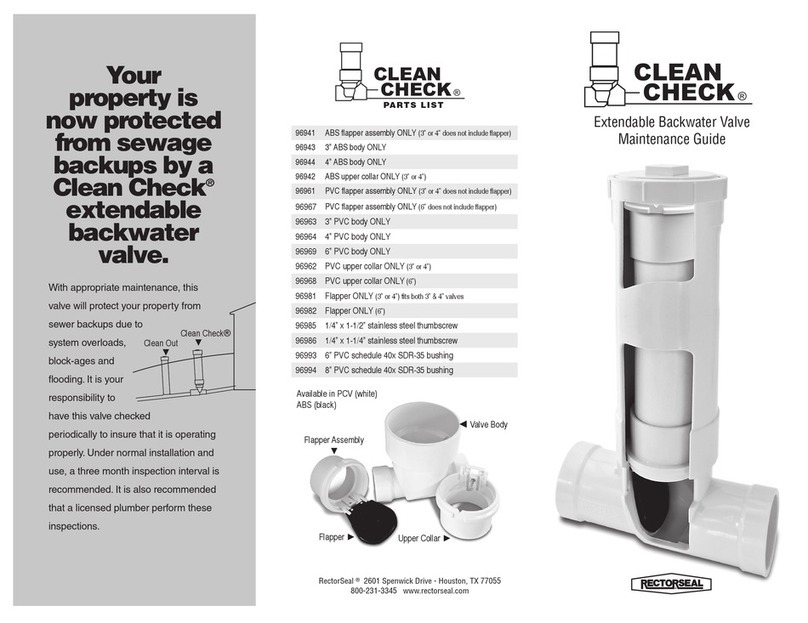
RectorSeal
RectorSeal Clean Check Maintenance Guide
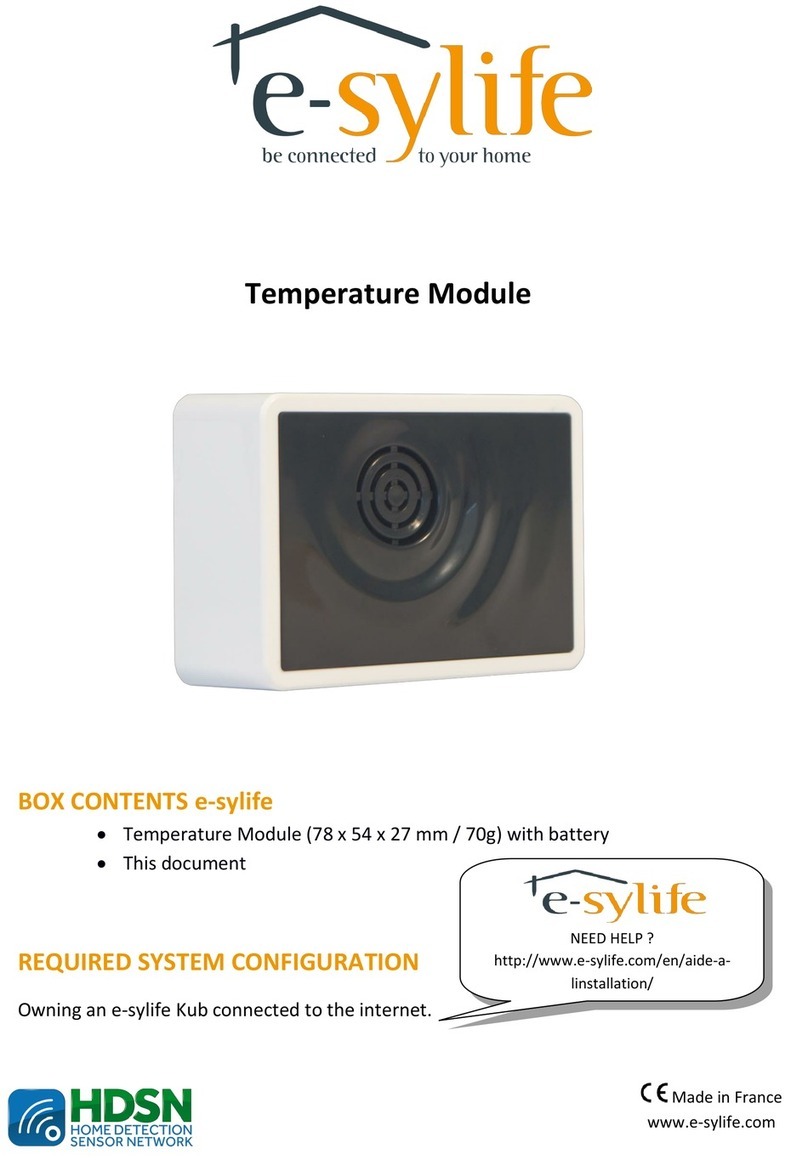
e-sylife
e-sylife Temperature Module Quick installation guide

VAT
VAT 244 Series Installation, operating, & maintenance instructions
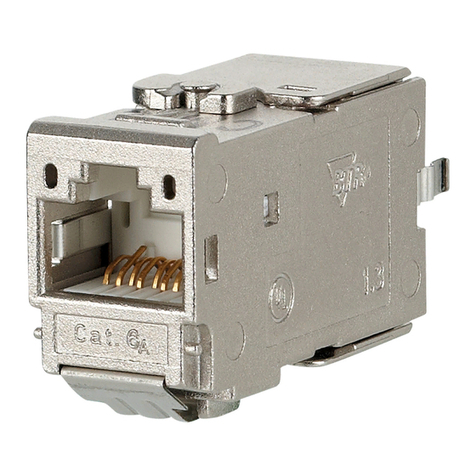
Metz Connect
Metz Connect C6Amodul Mounting Note for the installer
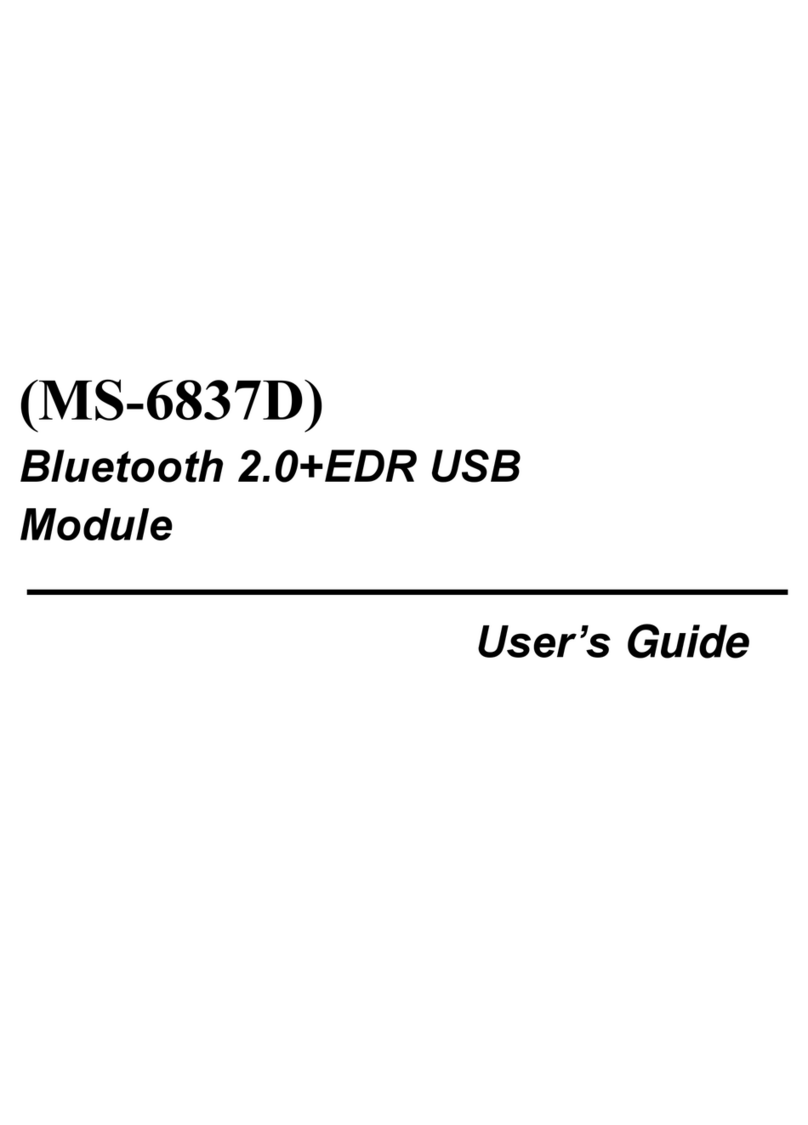
MSI
MSI BT2RM user guide
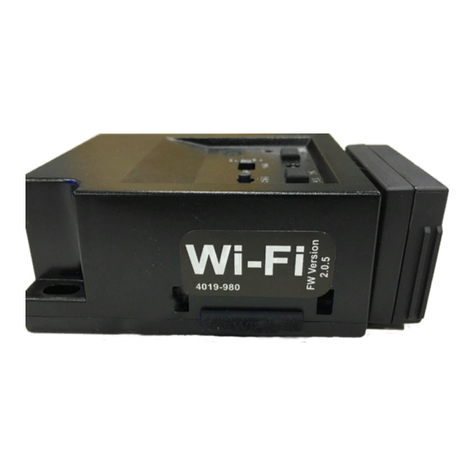
Hearth and Home Technologies
Hearth and Home Technologies WFM-RETROFIT installation instructions

NI
NI SCXI-1334 installation guide
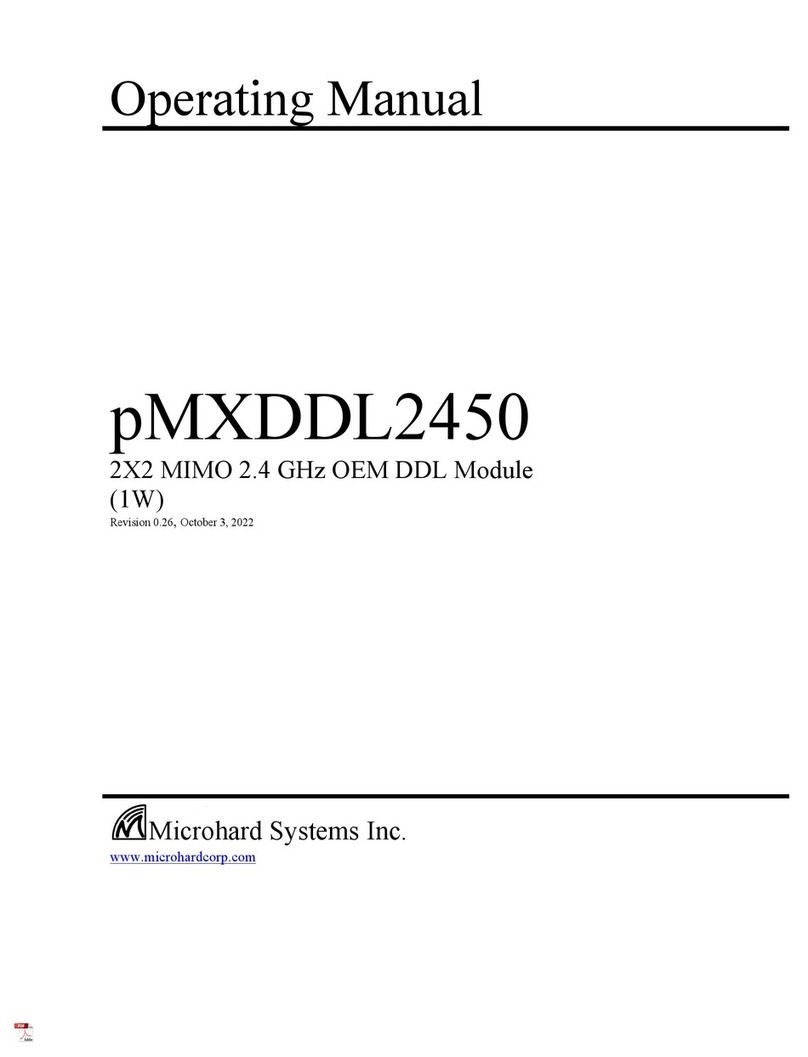
Microhard Systems
Microhard Systems pMXDDL2450 operating manual
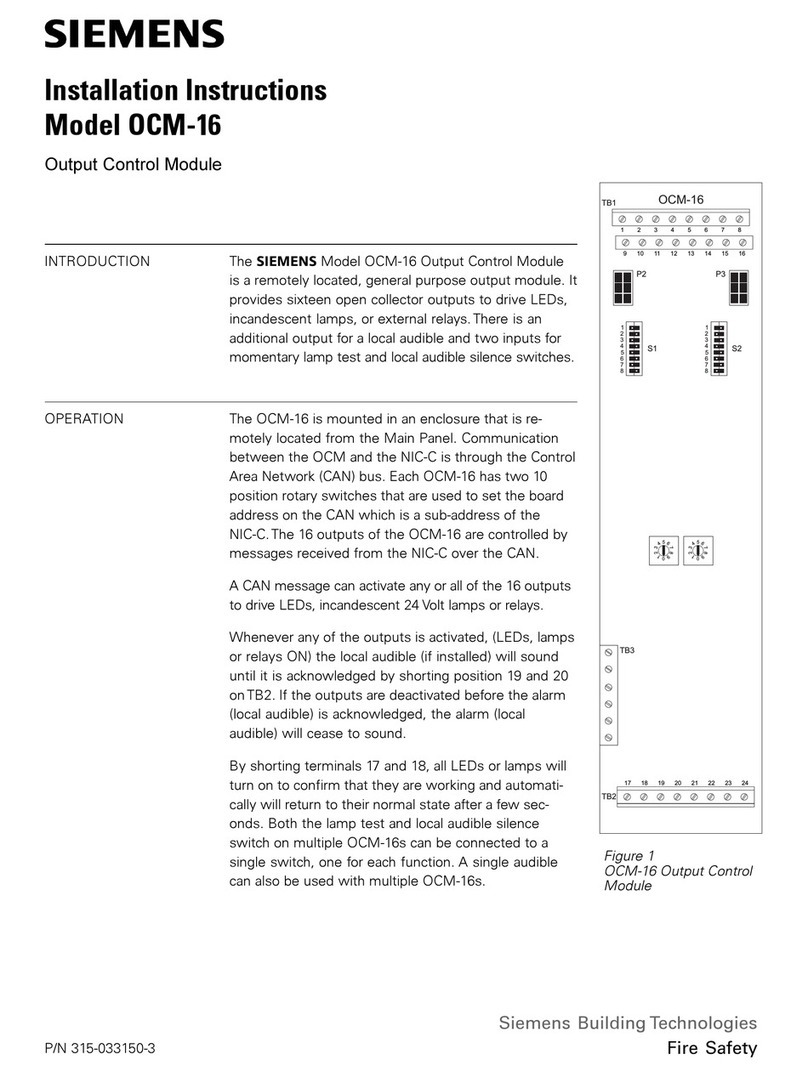
Siemens
Siemens OCM-16 installation instructions
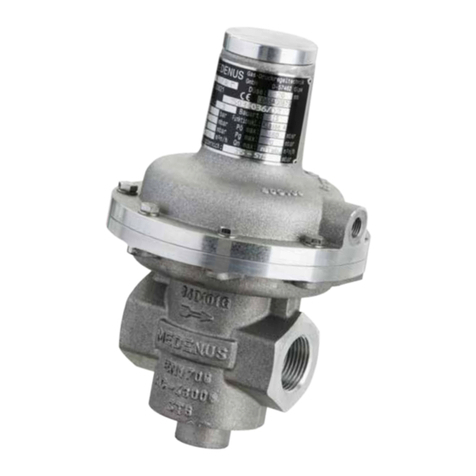
MEDENUS
MEDENUS SL 10 Operating and maintenance instructions
